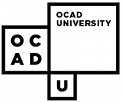When users interact with a feature rich software application, sometimes the functions that they wish to select are many levels deep within the menu system. The aim of this project is to design and test an adaptive predictive function palette, which will allow users to bypass the menu and submenu selection process. The function palette will present the user with a small number of likely functions based on a statistical analysis of application function usage. As a very simple example, the palette might present the six most frequently used application functions in a given application. It is hoped that such a palette may be effective in aiding users who find menu traversal difficult.
The software application that has been chosen as a test bed for this project is Alias/Wavefront's Maya (http://www.aliaswavefront.com). Maya is a professional application for creating graphics and animation that is used in the computer games industry and for creating special effects in Hollywood movies. It is feature rich, and allows for the construction of complex scenes simulating a variety of materials, lighting effects, and so forth. To make all this functionality available, Maya employs a deeply nested and complex interface. It is therefore an appropriate application with which to study an adaptive/predictive user interface.

